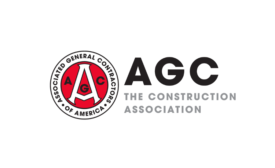Home » Keywords: » labor shortage
Items Tagged with 'labor shortage'
ARTICLES
Labor optimization can be coordinated with technology.
Read More
PODCAST: What the New Administration Means for the SPF Industry
Tom Harris breaks down what the Trump Administration will mean for those in the spray foam industry.
Read More
An Integrated Approach
Embracing Efficiency: Cutting Cost, Labor with Integrated Building Envelope Products
Read More
Construction Spending Slips in October as Worker Shortages Slow Project Completion Times
Construction spending declines 0.3 percent from September with decreases for residential, commercial, highway and manufacturing segments; contractors fill less than half the open positions in October
December 22, 2022
32 States Add Construction Jobs Between August and September, And for the Year, Even as Labor Shortages Hold Back Larger Gains
Florida has largest pickup in jobs, while North Dakota experiences largest percentage increases, Texas and New Jersey lose the most jobs annually and monthly, Mississippi and Alabama have largest percentage drops
November 10, 2022
Construction Workforce Shortages Risk Undermining Infrastructure Projects as Most Contractors Struggle to Fill Open Positions
91% of construction firms having a hard time finding workers to hire, driving up costs and project delays, new survey by the Associated General Contractors of America and Autodesk finds
September 18, 2022
Connect with the industry’s leading resource for unparalleled insights and education.
Join thousands of industry professionals today. Shouldn’t you know what they know?
JOIN NOWCopyright ©2024. All Rights Reserved BNP Media.
Design, CMS, Hosting & Web Development :: ePublishing











